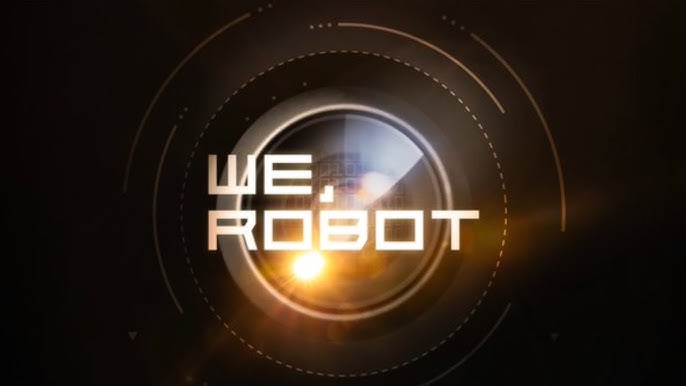On October 10, 2024, Tesla CEO Elon Musk presented a much-anticipated showcase during the “We, Robot” event held at a Hollywood studio. This event marked a significant moment in Tesla’s ongoing journey toward an autonomous future, highlighting innovations such as the long-awaited Robotaxi, dubbed the Cybercab, and an exciting new prototype known as the Robovan.
The Vision of a Robotaxi Network
Musk first introduced the idea of a robotaxi network in 2019, initially predicting a rollout the following year. However, over the years, timelines have frequently shifted, and the industry has witnessed a mix of optimism and skepticism regarding Tesla’s ambitious plans. Five years later, the launch of the Cybercab signals a potential turning point, with many watching closely to see how Tesla navigates the complexities of autonomous vehicle deployment.
Key Highlights from the Event
The Cybercab Unveiled
The highlight of the evening was undoubtedly the Cybercab, an autonomous vehicle designed to transform urban transportation. Musk revealed that production for the Cybercab is set to begin before 2027, with a projected price tag of under $30,000. This vehicle features a design reminiscent of a smaller Cybertruck, characterized by its rounded edges and futuristic aesthetic.
Musk’s presentation emphasized the Cybercab’s potential to provide cost-effective transportation, with operational costs potentially as low as $0.05 to $0.10 per mile. The Cybercab aims to make mobility accessible for a wider audience, particularly targeting city dwellers and small business owners who might operate fleets for ridesharing services.
The Surprise Reveal: Robovan
In a surprise twist, Musk introduced the Robovan, a versatile electric vehicle capable of carrying up to 20 passengers. Designed with high-density environments in mind, the Robovan is expected to play a crucial role in urban logistics, not only transporting people but also goods. Musk described a future where such vehicles could significantly reduce travel costs, thus making group transport more feasible and affordable.
The Robovan’s design focuses on practicality and efficiency, promising to serve various demographics, from sports teams to families. Musk painted an ambitious picture of urban landscapes transformed by these vehicles, suggesting they could pave the way for a greener, more efficient transport model.
The Optimus Robots Steal the Show
Adding to the spectacle, the event featured Tesla’s Optimus robots, which Musk claims will be priced between $20,000 and $30,000. These humanoid robots showcased their capabilities throughout the evening, interacting with attendees, serving refreshments, and even participating in a lively dance routine on stage.
Musk’s vision for the Optimus robots extends beyond mere entertainment; he posits that these robots could eventually handle household tasks, babysitting, and other roles, potentially revolutionizing everyday life. This aligns with Tesla’s broader mission to integrate robotics into various aspects of human activity.
Expert Insights and Industry Reactions
Following the event, industry experts provided their analyses of Musk’s announcements. Anthony Levandowski, a prominent engineer and one of the early pioneers of self-driving technology, expressed a mix of enthusiasm and caution. He praised Musk’s vision for affordable autonomous technology but underscored the challenges that remain in making the software robust enough for complex urban environments.
Levandowski noted that while companies like Waymo have launched fully operational driverless robotaxis in certain cities, Tesla’s approach, which relies on less expensive sensors and a more streamlined technological framework, could potentially lower costs and accelerate deployment. However, he highlighted the critical need for significant advancements in Tesla’s Full Self-Driving (FSD) software to meet the ambitious timelines Musk has proposed.
The Future of Tesla’s Master Plan
Throughout the event, Musk hinted at the forthcoming phases of Tesla’s Master Plan, teasing developments not only in autonomous vehicle technology but also in robotics. His remarks included references to “Master Plan Part 4,” which many expect will elaborate on Tesla’s strategic direction for the coming years. Musk’s flair for dramatic predictions has historically drawn both excitement and skepticism, with many wondering how realistic these timelines truly are.
A Cautious Reception from Analysts
Despite the buzz surrounding the event, analysts have advised caution. Many industry experts anticipate that while prototypes and demonstrations of the Cybercab and Robovan are encouraging, the journey to a fully functional, market-ready robotaxi service may still be years away. Key concerns include navigating the intricate regulatory landscape, addressing technological hurdles, and ensuring rigorous safety tests.
Analysts from various firms have noted that while Tesla’s aspirations are commendable, the company must realistically manage expectations. For instance, Dan Ives from Wedbush emphasized that this moment could be pivotal for Musk and Tesla, urging the need for clarity on addressing current challenges faced in the self-driving sector.
Conclusion: The Road Ahead
The “We, Robot” event offered an intriguing glimpse into Tesla’s vision for the future of autonomous transportation, featuring the Cybercab and Robovan as pivotal components of that strategy. However, as with many of Musk’s past assertions, the real question remains: when will these innovations transition from concept to reality?
As Tesla moves forward, the balance between groundbreaking innovation and practical implementation will be critical in determining the success of its ambitious goals in the autonomous vehicle space. The journey toward widespread adoption of robotaxis and autonomous transportation may be fraught with challenges, but with ongoing advancements and a commitment to pushing boundaries, Tesla continues to shape the future of mobility.
